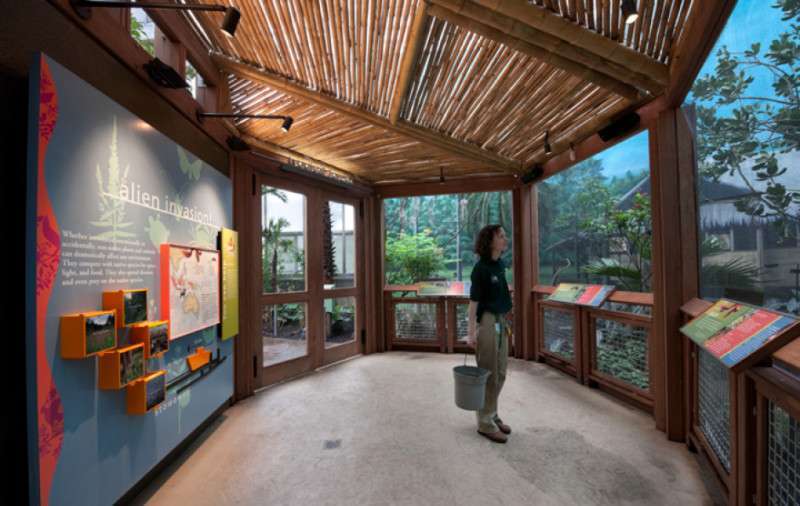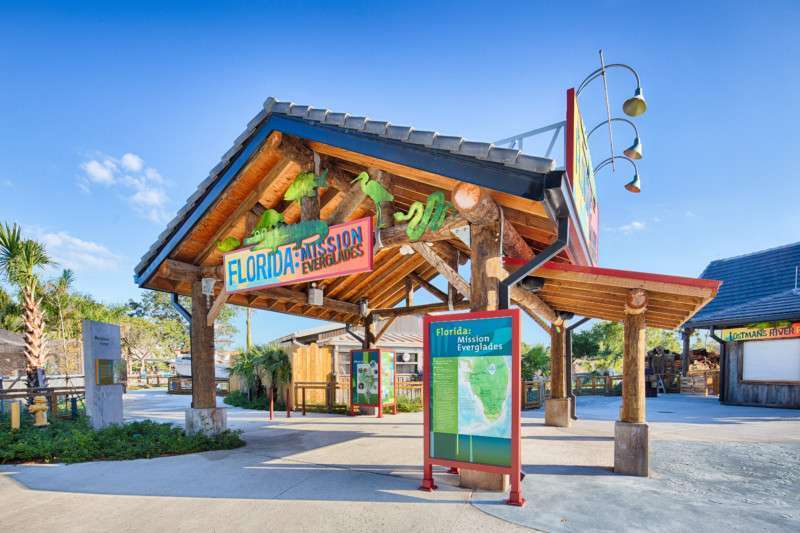Michael Mercadante prepares to take the helm as TEA’s new president
Interview by Joe Kleiman
Michael Mercadante, President of Main Street Design, Inc. and a Senior Exhibit Designer with the firm, was recently elected to serve as International Board President of the Themed Entertainment Association (TEA), effective November 2018. Michael will be officially installed at the TEA Members Meeting held annually during the IAAPA Attractions Expo in Orlando. He succeeds David Willrich of DJ Willrich Ltd, who served for two one-year terms. In this exclusive interview, Michael talks about his firm’s work, his design background and business philosophy, and shares his perspectives on the attractions industry and the importance of giving back as a volunteer.
How did you enter the business?
To begin with, I’m a registered architect. After graduating from the University of Notre Dame (Indiana, US) I began my professional career in Boston working as a junior designer at several architecture firms, including TAC (The Architects Collaborative), which was a fantastic talent incubator. Purely by chance, I picked up a freelance assignment with Joseph A. Wetzel Associates, an interpretive planning and design firm in the city, which introduced me to the world of exhibit design, and I’ve really never looked back. Two of the earliest projects I worked on were the Hall of Health at the California Museum of Science and Industry and the Frank Gehry-designed California Aerospace Museum, both of which were later integrated into the California Science Center. I started Main Street Design in 1991 with Tevere MacFadyen, an interpretive planner whom I met at Wetzel. Our company is based in Cambridge, MA and works throughout North America and internationally. My role is to oversee our business operations and to lead the design end of the process.
How is Main Street Design set up?
At Main Street we believe that content development, three dimensional design, and graphic design are inextricably interconnected and equally critical to a project’s success. Our studio is organized to ensure that these three practice areas work collaboratively, and all three are represented in every project we do. We have a representative from each discipline on the team, and they are encouraged to overlap and interact, sharing responsibility on the team.
Our staff includes several permanent members as well as a cohort of long-term contract employees whom we enlist for specific projects. Many work remotely from locations throughout New England. We are very fortunate to have this fantastic talent pool to draw on. This model allows us to ebb and flow with the constantly changing work environment and gives us the freedom to quickly adapt to workflow changes.
What are some of the projects you’ve worked on that you’re most proud of? What makes them unique?
I worked on Think Tank at the National Zoo, which explores issues of language and cognition in non-human animals – in particular orangutans – and received the top exhibit from the Association of Zoos and Aquariums (AZA) when it opened. I also worked on the McNeil Avian Center at the Philadelphia Zoo which received an AZA award, as well as being the recipient of a TEA Thea Award. Other projects that I am proud of include the renovation of the Egyptian Museum in Cairo, our work for the National Park Service, including Zion and Everglades National Parks, and two recent zoo projects at Zoo New England’s Nature’s Neighborhoods and Zoo Miami’s Florida: Mission Everglades that were listed this past summer as two of the “15 Coolest Zoo Exhibits in the U.S. for Families” on the blog mommynearest.com.
I feel that these are all unique in the ways they present complex information in an engaging and entertaining style, in a recreational setting. When we do our job well, our guests don’t even realize how much they’re learning until they find themselves talking about it on the ride home.

Specializing in museum, zoo, and aquarium design, what changes have you seen over the years? What are the important connections between the business of zoo and museum design, and attraction design?
We focus on natural history and cultural heritage, which over the past decade has taken us more towards natural history and environmental education. In 1993 we were awarded an open term contract from the Smithsonian Institution, which led to work at the National Museum of Natural History and the Smithsonian Institution Traveling Exhibition Service, and also to Think Tank , which brought us into the zoo and aquarium world. Winning the AZA’s top exhibit award gave us great visibility.
When we first started, the zoo and aquarium industry called all interpretation “graphics,” and that is mainly how interpretation was being done. Although zoo architects and landscape architects were doing groundbreaking work creating immersive, naturalistic habitats, interpretation was still mostly “a book on the wall.” The institutions and designers wouldn’t think about interpretation until right up to the moment they were ready to open. But these days, interpretive elements are integrated into all aspects of an exhibit. Through osmosis, visitors begin to discover things everywhere they look, not just off the graphic panels.
All of these business sectors are about the visitor experience, so the connections between them are really about creating experiences that take visitors on a journey that tells a story. In the zoo and museum worlds, that story is usually about environmental education or cultural heritage; a “real” story, as opposed to the usually fictional story of a themed attraction, but with a similar objective: engaging and delighting our guests.

Has being part of TEA helped you as a designer? What drew you to become involved in the organization and to pursue a leadership track?
Like many others, I got into this business because I went to Disneyland as a kid and was enchanted and amazed. Early in my design career I realized that I wanted to do more than just architecture. Ten or 12 years ago, I heard about the TEA Summit conference, and I discovered a wonderful, creative, supportive group of peers.
Main Street has built its practice around delivering effective and authentic content-based experiences. The TEA straddles the visitor experience line, including entertainment environments as well as more traditional interpretive settings like museums, zoos, and aquariums. There are many ways to interface between the different sectors of our industry, bringing together entertainment and education in our guest experiences, just as TEA does with its membership. There are crossovers. Many TEA members work in various peripheral industries such as zoos and museums. There are a lot of similarities between exhibit and attraction development.
In particular, I feel that the TEA is really about all the people that it takes to develop visitor experiences. I’ve found that every project involves collaborations – each one is a team effort. The TEA helps connect designers and fabricators with one another, with other creative partners, and with owners and operators. My own company’s cross-disciplinary approach reflects this multifaceted philosophy.
I have tried to bridge the fine lines between these industry variations. TEA has enabled me to stay in touch with the parts of the industry that are more attraction focused. As exhibit designers, we bring experience with exhibit development and authentic content. There are opportunities to apply those capabilities in unexpected ways, such as what Main Street has done working with Ripley Entertainment and Universal Creative.
Tell us about your commitment to volunteer service and why that is important to you.
I have always felt that volunteering is essential to living a full and positive life. Giving back is important, whether to your community or to your industry. In the past, I have volunteered by tutoring at a local high school, and for more than 20 years I have been a wish grantor for the Make-A-Wish Foundation. In my professional life, I served on the AZA Conference Program Committee before getting involved with TEA. Our industry membership associations provide valuable professional development and education, and opportunities to network and meet others with similar interests, learn about what others are doing, share best practices, and find ways to collaborate. TEA’s programs also help to educate, grow and improve our industry overall. • • •






